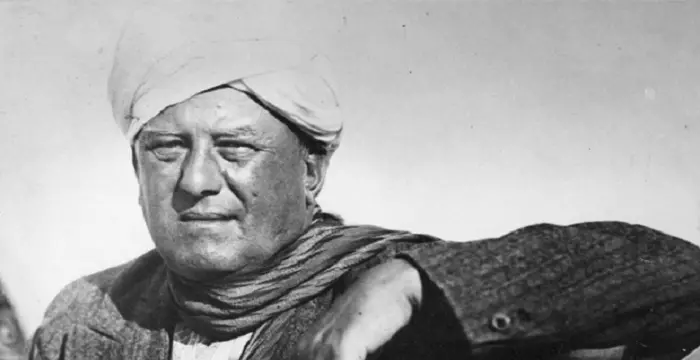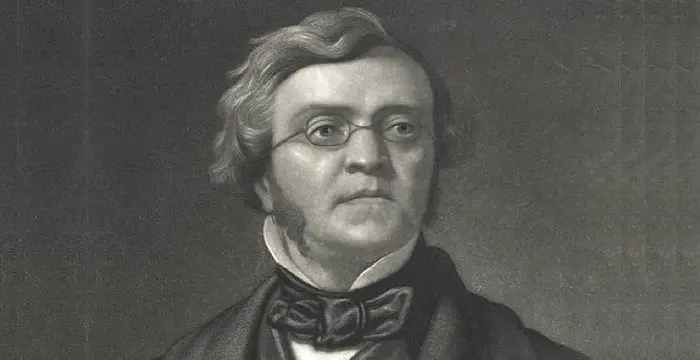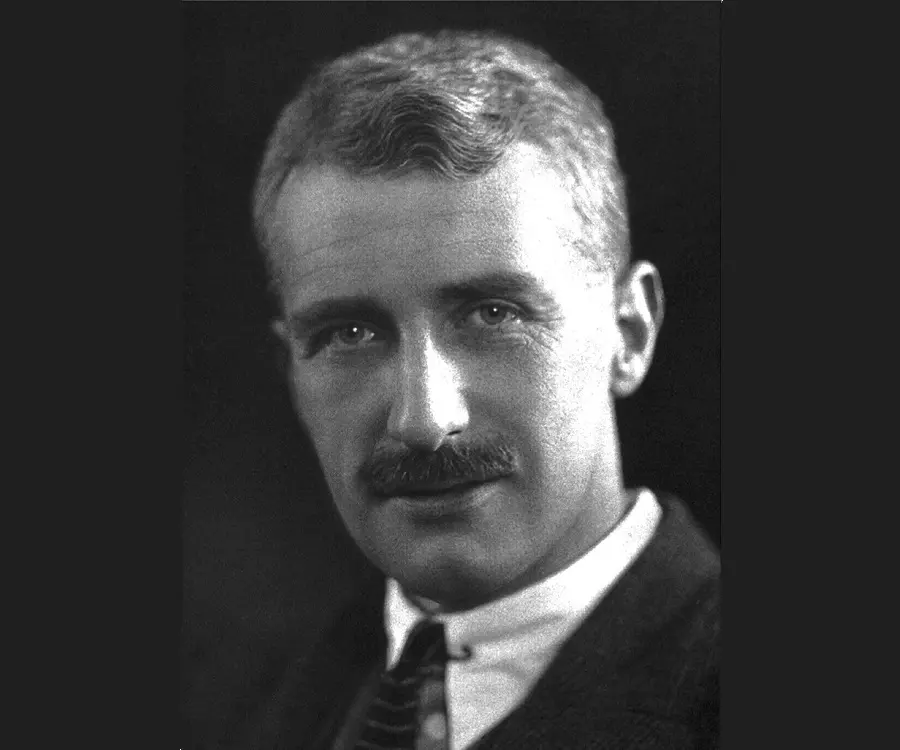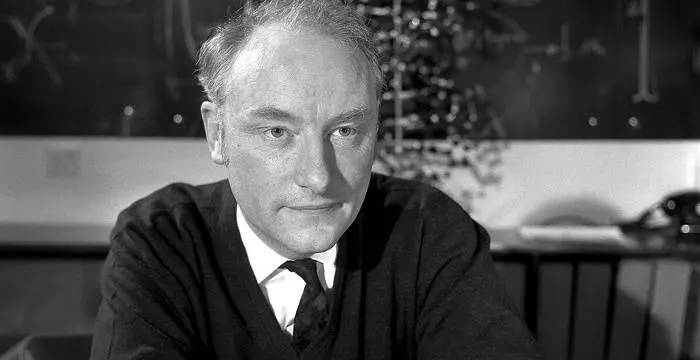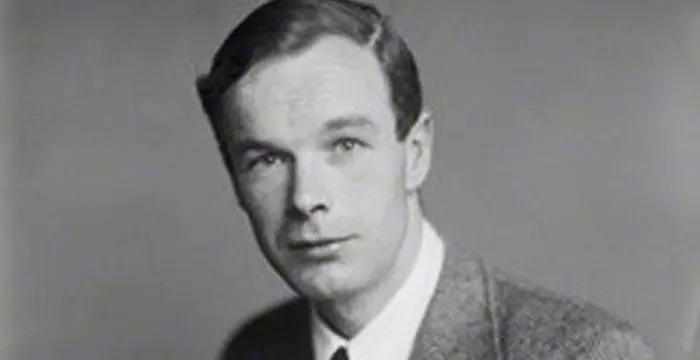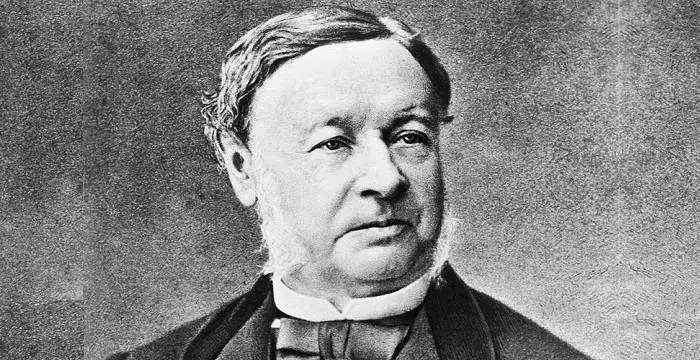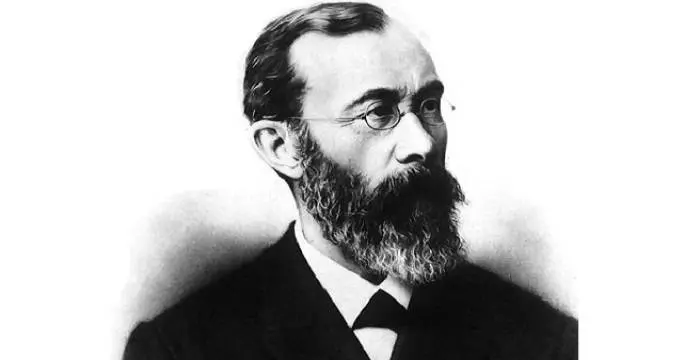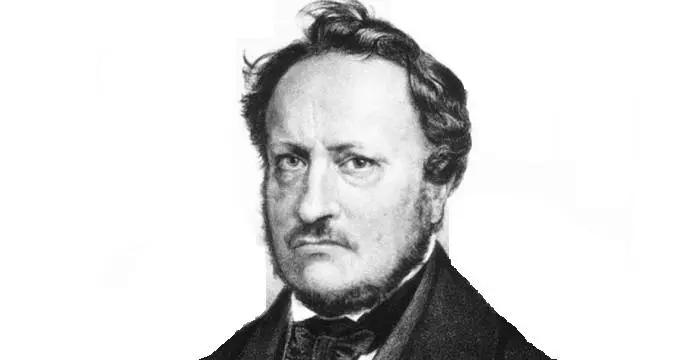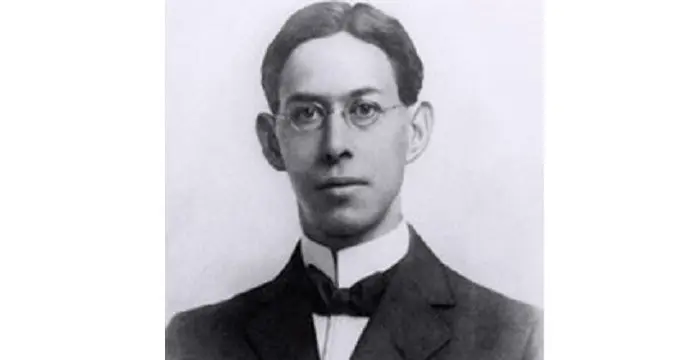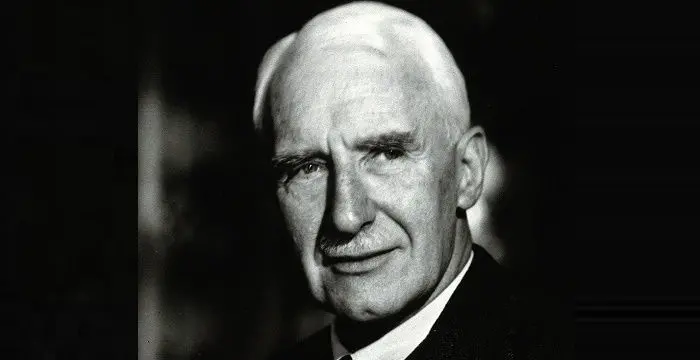
Archibald Hill - Physiologists, Family and Life
Archibald Hill's Personal Details
Archibald Vivian Hill was a Nobel Laureate English physiologist who is credited for discovering the production of heat in muscles
| Information | Detail |
|---|---|
| Birthday | September 26, 1886 |
| Died on | June 3, 1977 |
| Nationality | British |
| Famous | Trinity College, Cambridge, Scientists, Biophysicists, Physiologists |
| Spouses | Margaret Keynes |
| Known as | A. V. Hill, Archibald Vivian Hill |
| Childrens | David Keynes Hill, Janet Humphrey, Maurice Hill, Polly Hill |
| Universities |
|
| Notable Alumnis |
|
| Birth Place | Bristol |
| Gender | Male |
| Sun Sign | Libra |
| Born in | Bristol |
| Famous as | Physiologist |
| Died at Age | 90 |
// Famous Trinity College, Cambridge
Isaac Newton
Isaac Newton was an English scientist and mathematician, who discovered gravitation and Newtonian Mechanics. Read this biography to find more on his life.
Aleister Crowley
Aleister Crowley was an occultist and ceremonial magician who founded the ethical philosophy of Thelema. This biography of Aleister Crowley provides detailed information about his childhood, life, achievements, works & timeline.
William Makepeace Thackeray
William Thackeray was an English novelist and satirist. Read this brief biography to find more on his life & timeline.
Archibald Hill's photo
Who is Archibald Hill?
Archibald Vivian Hill was an English physiologist who won the 1992 Nobel Prize in Medicine "for his discovery relating to the production of heat in the muscle". Hill was one of the founding figures of the diverse disciplines of biophysics and operation research. An outstanding humanitarian and parliamentarian, he dedicated his life to the understanding of muscle physiology. The impact of his research is felt even today; his work has wide-raging application in sports medicine. Interestingly, Hill took a lot of academic positions during his career. He served as the Professor of Physiology at Manchester University, University College London. Furthermore, he was appointed the Royal Society's Foulerton Research Professor and was in charge of the Biophysics Laboratory at University College. Additionally, he played a crucial role during World War I and World War II. During World War II, he condemned the Nazi Regime and in turn assisted numerous refugee German scientists to continue their work in England.
// Famous Scientists
Juliane Koepcke
Juliane Koepcke is a German-Peruvian biologist, who was the lone survivor among the 92 passengers and crew of the ill-fated LANSA Flight 508 that crashed in the Peruvian rainforest on 24 December 1971. Know more about her life in this biography.
Henry Cavendish
Henry Cavendish was a theoretical chemist and physicist, renowned for discovery of hydrogen and calculation of the mass of earth. To know more about his childhood, profile, timeline and career read on
Konstantin Tsiolkovsky
Konstantin Tsiolkovsky was a Russian rocket scientist and a pioneer of astronautics. This biography provides detailed information about his childhood, family, personal life, career, achievements, etc.
Childhood & Early Life
Archibald Vivian Hill was born on September 26, 1886 at Bristol, England. Not much is known about his parents or his childhood days.
Hill received his early education from Blundell’s School. He later received a scholarship that helped him gain admission at the Trinity College, Cambridge. At Cambridge, he studied mathematics and was a Third Wrangler in Mathematical Tripos.
Following his mathematical pursuits, Hill turned his attention to physiology. The move came after his teacher Dr Walter Morley Fletcher urged Hill to take up physiology.
Career
In 1909, Hill started his research work on physiology. It was due to John Newport Langley, Head of the Department of Physiology, that he took to studying the nature of muscle contraction. Langley turned Hill’s attention to the problem of lactic acid in muscle in relation to the effect of oxygen upon its removal in recovery. Same year, Hill published his first paper which became a landmark in the history of receptor theory.
In the early days of his career, Hill used the Blix apparatus—equipment obtained from the Swedish physiologist Magnus Blix. He conducted various experiments on the heat production of contracting muscles, through which he came up with exacting measurements of the physics of nerves and muscles.
In 1910, Hill received a fellowship at Trinity. He spent the winter of 1911 working with Burker and Paschen in Germany. Until the outbreak of World War I in 1914, he worked on a range of topics in physiology such as nervous impulse, haemoglobin, calorimetry of animals, along with his colleagues in Cambridge and Germany. Alongside, he continued with his work on physiology of muscular contraction.
In 1914, Hill was appointed as a University Lecturer in Physical Chemistry at Cambridge. The appointment turned his attention from physiology. During World War I, he served as a Captain and Brevet-major. He also took up the post of the Director of the Munitions Inventions Department for Anti-Aircraft Experimental Section.
Post War, he returned to Cambridge and started studying the physiology of muscles. It was during this time that he met Meyerhof of Kiel. Though Kiel studied the problem from a different angle, his results were similar to that of Hill. Same year, Hill collaborated with W. Hartree in the myothermic investigations.
In 1920, he succeeded William Stirling to take up the chair of Physiology at the Victoria University of Manchester. During this time, he continued with his work on muscular activity and began to apply the results obtained on isolated muscles to the case of muscular exercise in man. He discovered the production of heat in the muscle. Concurrently, German physiologists, Otto Fritz Meyerhof discovered the relationship between the consumption of oxygen and metabolism of lactic acid in the muscle. The two shared the 1922 Nobel Prize in Physiology and Medicine for this work.
From 1923 to 1925, Hill served as the Jodrell Professor of Physiology at the University College London, succeeding Ernest Starling. In 1926, he was appointed the Royal Society's Foulerton Research Professor and was in charge of the Biophysics Laboratory at University College, a post he held until his retirement in 1952.
Post retirement, he returned to the Physiology Department, where he continued with his experiments until his end days. In his lifetime, Hill authored numerous scientific papers, lectures and books. Some of the books penned by him include ‘Muscular Activity’, ‘Muscular Movement in Man’, ‘Living Machinery’, ‘The Ethical Dilemma of Science and Other Writings’ and ‘Traits and Trials in Physiology’.
During World War II, he served on many commissions on defence and scientific policy, such as he was a member of the War Cabinet Scientific Advisory Committee from 1940 to 1946, Chairman of the Research Defence Society from 1940 to 1951 and Chairman of the Executive Committee of the National Physical Laboratory from 1940 to 1945.
Hill did not restrict his career to scientific achievements and academic positions alone. He extensively carried out public service as well. In 1933, he became a founding member and Vice President of the Society for the Protection of Science and Learning. He also served as the President of the British Society for the Advancement of Science.
From 1955 to 1960, he served as the President of the Marine Biological Association. Until 1966, he continued to work as an active researcher therein.
Major Works
Hill’s most important contribution to science came in the field of physiology. He dedicated his life to the understanding of muscle physiology. Through his research, he discovered the production of heat and mechanical work in muscles. He was also one of the founding figures of the diverse disciplines of biophysics and operation research.
Awards & Achievements
In 1918, he was elected as a Fellow of the Royal Society and was also honoured with the Officer of the Order of the British Empire.
In 1922, he was conferred with the prestigious Nobel Prize in Physiology or Medicine which he shared with German physiologist, Otto Fritz Meyerhof.
In 1947, he received Medal of Freedom with Silver Palm. Following year, he received the Copley Medal of the Royal Society.
In 1952, he was made President of the British Association.
Personal Life & Legacy
He married Margaret Keynes in 1913. The couple was blessed with four children, two sons and two daughters namely, Polly Hill, David Keynes Hill, Maurice Hill and Janet Hill.
Archibald Vivian Hill breathed his last on June 3, 1977 at Cambridge, England.
Posthumously in 2015, an English Heritage Blue plaque was erected at Hill's former home, 16 Bishopswood Road, Highgate. The house was redeveloped and renamed as Hurstbourne
Trivia
Archibald Vivian Hill kept a toy figure of Adolf Hitler, with a movable saluting arm, on his desk. This was to pay gratitude to all the scientists that Germany had expelled during World War.
// Famous Biophysicists
James Watson
James Watson is an American molecular biologist and geneticist who played a crucial role in the discovery of the molecular structure of D.N.A. This biography provides detailed information about his childhood, life, achievements, works & timeline
Francis Crick
Francis Crick was an English molecular biologist, biophysicist and neuroscientist, who received the Nobel Prize for Medicine. This biography profiles his childhood, life, career, achievements and timeline.
Alan Lloyd Hodgkin
Sir Alan Lloyd Hodgkin was an English biophysicist and a physiologist who received the Nobel prize in Physiology or Medicine in 1963. This biography profiles his childhood, life, research, achievements and timeline.
Archibald Hill's awards
| Year | Name | Award |
|---|---|---|
Other | ||
| 0 | 1922 - Nobel Prize in Physiology or Medicine | |
| 0 | 1948 - Copley Medal | |
| 0 | 1926 - Royal Medal | |
Archibald Hill biography timelines
- // 26th Sep 1886Archibald Vivian Hill was born on September 26, 1886 at Bristol, England. Not much is known about his parents or his childhood days.
- // 1909In 1909, Hill started his research work on physiology. It was due to John Newport Langley, Head of the Department of Physiology, that he took to studying the nature of muscle contraction. Langley turned Hill’s attention to the problem of lactic acid in muscle in relation to the effect of oxygen upon its removal in recovery. Same year, Hill published his first paper which became a landmark in the history of receptor theory.
- // 1913He married Margaret Keynes in 1913. The couple was blessed with four children, two sons and two daughters namely, Polly Hill, David Keynes Hill, Maurice Hill and Janet Hill.
- // 1914In 1910, Hill received a fellowship at Trinity. He spent the winter of 1911 working with Burker and Paschen in Germany. Until the outbreak of World War I in 1914, he worked on a range of topics in physiology such as nervous impulse, haemoglobin, calorimetry of animals, along with his colleagues in Cambridge and Germany. Alongside, he continued with his work on physiology of muscular contraction.
- // 1914In 1914, Hill was appointed as a University Lecturer in Physical Chemistry at Cambridge. The appointment turned his attention from physiology. During World War I, he served as a Captain and Brevet-major. He also took up the post of the Director of the Munitions Inventions Department for Anti-Aircraft Experimental Section.
- // 1918In 1918, he was elected as a Fellow of the Royal Society and was also honoured with the Officer of the Order of the British Empire.
- // 1920 To 1922In 1920, he succeeded William Stirling to take up the chair of Physiology at the Victoria University of Manchester. During this time, he continued with his work on muscular activity and began to apply the results obtained on isolated muscles to the case of muscular exercise in man. He discovered the production of heat in the muscle. Concurrently, German physiologists, Otto Fritz Meyerhof discovered the relationship between the consumption of oxygen and metabolism of lactic acid in the muscle. The two shared the 1922 Nobel Prize in Physiology and Medicine for this work.
- // 1922In 1922, he was conferred with the prestigious Nobel Prize in Physiology or Medicine which he shared with German physiologist, Otto Fritz Meyerhof.
- // 1933Hill did not restrict his career to scientific achievements and academic positions alone. He extensively carried out public service as well. In 1933, he became a founding member and Vice President of the Society for the Protection of Science and Learning. He also served as the President of the British Society for the Advancement of Science.
- // 1947In 1947, he received Medal of Freedom with Silver Palm. Following year, he received the Copley Medal of the Royal Society.
- // 1952In 1952, he was made President of the British Association.
- // 3rd Jun 1977Archibald Vivian Hill breathed his last on June 3, 1977 at Cambridge, England.
- // 2015Posthumously in 2015, an English Heritage Blue plaque was erected at Hill's former home, 16 Bishopswood Road, Highgate. The house was redeveloped and renamed as Hurstbourne
// Famous Physiologists
Theodor Schwann
Theodor Schwann was a German physiologist who discovered the Schwann cells in the peripheral nervous system. This biography of Theodor Schwann provides detailed information about his childhood, life, achievements, works & timeline.
Wilhelm Wundt
Wilhelm Wundt was a renowned doctor who conducted pioneering studies on experimental psychology. To know more about his childhood, career, profile and timeline read on
Charles Best
Charles Best was a great scientist and a renowned physiologist who is remembered for being the co-discoverer of insulin. Read this biography to learn about his profile, childhood, life and timeline.
Johannes Peter Müller
Johannes Peter Müller was a German physiologist and comparative anatomist. Check out this biography to know about his childhood, life, achievements, works & timeline.
Jared Diamond
Jared Mason Diamond is an American scientist and author reputed for his highly acclaimed and popular science books.
Joseph Erlanger
Joseph Erlanger was a renowned American physiologist who won the Nobel Prize in Medicine in 1994. Check out this biography to know about his childhood, life, achievements, works & timeline.
Archibald Hill's FAQ
What is Archibald Hill birthday?
Archibald Hill was born at 1886-09-26
When was Archibald Hill died?
Archibald Hill was died at 1977-06-03
Where was Archibald Hill died?
Archibald Hill was died in Cambridge
Which age was Archibald Hill died?
Archibald Hill was died at age 90
Where is Archibald Hill's birth place?
Archibald Hill was born in Bristol
What is Archibald Hill nationalities?
Archibald Hill's nationalities is British
Who is Archibald Hill spouses?
Archibald Hill's spouses is Margaret Keynes
Who is Archibald Hill childrens?
Archibald Hill's childrens is David Keynes Hill, Janet Humphrey, Maurice Hill, Polly Hill
What was Archibald Hill universities?
Archibald Hill studied at Trinity College, Cambridge, University of Cambridge, Trinity College, Cambridge
What was Archibald Hill notable alumnis?
Archibald Hill's notable alumnis is Trinity College, Cambridge
What is Archibald Hill's sun sign?
Archibald Hill is Libra
How famous is Archibald Hill?
Archibald Hill is famouse as Physiologist

